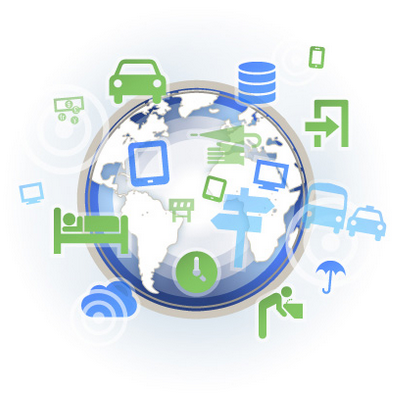 NEWS
NEWS
 NEWS
NEWS
 NEWS
NEWS
![]() Once a trend, now fast becoming a reality, the Internet of Things (IoT) is the buzzword for a concept that’s rapidly changing the world in which we live. But as with all buzzwords, confusion sometimes creeps in, and the concept of IoT is often used interchangeably with terms like the Industrial Internet or Machine-to-Machine (M2M). But are IoT and the Industrial Internet really the same thing? If not, what’s the difference?
Once a trend, now fast becoming a reality, the Internet of Things (IoT) is the buzzword for a concept that’s rapidly changing the world in which we live. But as with all buzzwords, confusion sometimes creeps in, and the concept of IoT is often used interchangeably with terms like the Industrial Internet or Machine-to-Machine (M2M). But are IoT and the Industrial Internet really the same thing? If not, what’s the difference?
This is actually one of the most interesting debates among professionals on Quora right now, and although there’s still no definitive answer, IT experts slowly seem to be reaching a consensus. One thing is clear – the two terms refer to different ‘things’, no doubt about that, but at the same time they’re similar enough concepts that they can and are often used interchangeably.
The general consensus seems to be that the Internet of Things refers to a much broader and more abstract concept that’s evolving from the Industrial Internet.
Essentially, the ‘Industrial Internet’, or M2M, describes “machines” that use network resources to communicate with remote application infrastructure in order to monitor and control the machine itself, or alternately, the surrounding environment. In other words, the Industrial Internet refers to all of the devices, sensors, and software that enables connectivity between machines – a physical ‘thing’.
In turn, the ‘Internet of Things’ can be thought of as the ‘vision’ of what the Industrial Internet will ultimately lead to, wherein the physical world becomes merged with the digital world. It refers to the possibilities and potential life-changing benefits that the realization of the Industrial Internet will bring.
Alternatively, another definition we can use is that the Industrial Internet is more specific to IT – especially the technology (hardware and services) behind the Internet of Things. Meanwhile, the Internet of Things describes the broader trend that affects ‘normal’ people, and how they interact with their smart devices, i.e., smartphones, smart cars, web browsers and so on.
Matt Hatton in Digi.com makes an attempt to explain how the two concepts are related, saying that the Industrial Internet is essentially the “plumbing” for the Internet of Things. Basically, he’s saying that the Industrial Internet is what provides the connectivity that allows the Internet of Things to work – without it, it simply wouldn’t be possible.
THANK YOU